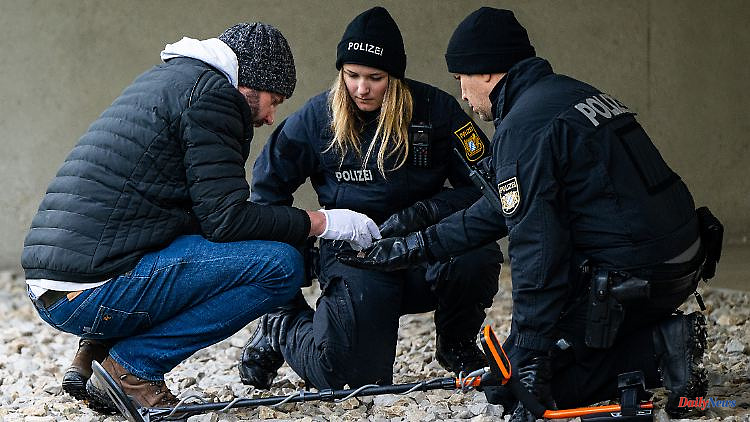The stolen Celtic gold treasure from a museum in Manching remains untraceable. The police started a search around the crime scene to find clues to the unknown perpetrators. Items are secured. Can they help solve the case?
After the museum was broken into and the gold stolen in Manching, Upper Bavaria, a large contingent of police searched the area and secured items. About 60 officers from the Bavarian State Criminal Police Office (LKA) and the riot police from Eichstätt were on duty. The police officers also examined the ground with metal probes.
The entire area outside the actual crime scene was searched again, said LKA spokesman Fabian Puchelt. "We just want to see if we can find any objects that the perpetrator or perpetrators might have left behind while trying to escape." According to Puchelt, garbage cans were also searched. Flyers were also distributed to draw the attention of potential witnesses to the crime.
During the campaign, various items were discovered and secured that could be related to the crime, the LKA said. "With regard to the ongoing investigation, no information is given on the exact nature of the objects." Further investigations would have to show whether an object was connected to the burglary.
According to the previous investigations, the unknown perpetrators entered the Manching Celtic-Roman Museum early Tuesday morning in order to steal a more than 2,000-year-old gold treasure from the Celtic period. The burglars escaped with nearly 500 coins. A special commission is investigating at the LKA.
The Celtic gold coins were discovered in 1999 during an archaeological excavation in Manching. According to the museum, they are the "largest Celtic gold find of the 20th century". The pure material value of the 3.7 kilogram treasure is estimated at around a quarter of a million euros, the commercial value of the historical coins is in the millions.
The officials are also examining connections with similar cases from the past few years, such as the spectacular theft of jewels from the Green Vault in Dresden and the coin theft from the Bode Museum in Berlin.
Such spectacular art thefts are also increasingly preoccupying insurers. They led to a "significantly increased dialogue with the museums," said Eric Wolzenburg, head of art insurance at Allianz property insurance. The point is whether such acts can also happen in one's own house.
According to Allianz, it is one of the largest art insurers in Germany, and the insurers often advise museums on how to protect the exhibits. Outside the opening hours, the alarm system plays a particularly important role. "We require redundant reporting channels. It is often about solutions that use both wired and wireless technologies such as mobile communications or satellites," said Wolzenburg. The expert does not comment on the case in Manching. According to the police, the cutting of fiber optic lines near the museum had prevented the alarm message.
"What we are seeing is increasing professionalism on the part of the perpetrators," said Wolzenburg. Increasingly, it is not individuals, "but a group of highly specialized actors". Insider knowledge is often used. "Ultimately, it must be clear that every security system can be defeated." Which measures would be used is a balance between security and presentation for the museums, said the expert. "It's no use hiding the works of art behind a centimeter thick safety glass."












